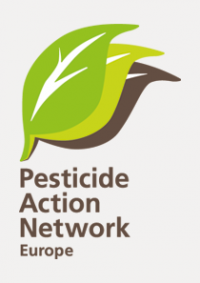Fruit and vegetables in Europe are increasingly contaminated with PFAS pesticide residues. This is shown in the analysis of official data from the national monitoring programmes of pesticide residues in food in Member States. The number of European fruit and vegetables with detected PFAS pesticide residues has nearly tripled between 2011 and 2021, with a growth rate of 220% for fruit and of 274% for vegetables. In some of the EU Member States studied individually, the growth rate has been even more dramatic: Austria (+698% for fruit, +3277% for vegetables) and Greece (+696% in fruit, +1974% in vegetables).
A detailed analysis of the 2021 data, the most recent published to date, provides a more refined picture of the contamination. It shows that non-organic fruit, especially summer fruit, are the products most frequently contaminated with PFAS pesticide residues. Zooming in on fruits grown in Europe, 37% of strawberries, 35% of peaches and 31% of apricots are contaminated. Of this contaminated European-grown fruit, 20% contain cocktails of PFAS pesticide residues, with up to four different PFAS pesticides detected in a single sample of strawberries and table grapes, and up to three in peaches and apricots.
While, on average, a smaller percentage of European-grown vegetables (12%) is contaminated with PFAS pesticide residues compared to fruit, some vegetables are as frequently contaminated as the top-ranked fruit (chicories: 42%; cucumbers: 30%).
In 2021, the Member States that produced fruit and vegetables most frequently contaminated with PFAS pesticide residues were the Netherlands (27%), Belgium (27%), Austria (25%), Spain (22%) and Portugal (21%). Among imported fruit and vegetables, those most likely to contain residues of PFAS pesticides came from Costa Rica (41%), India (38%), South Africa (28%), Colombia (26%) and Morocco (24%).
In 2021, the most often detected PFAS active substances in contaminated European-grown products were the fungicide fluopyram, the insecticide flonicamid and the fungicide trifloxystrobin.
These findings indicate that the use of PFAS in pesticides results in fruit and vegetable contaminated with residues of these chemicals, leading to an increasingly frequent indigestion of PFAS pesticide residues by European consumers. This source of PFAS contamination should not be downplayed. The ongoing accumulation of PFAS in soils, waters and the food chain, along with other chemical substances or “chemical cocktails”, pose long-term risks to human health and the environment. A ban on the use of PFAS pesticides is urgent to curb European citizen exposure to PFAS pesticides and protect citizen health, including that of the most vulnerable groups, such as pregnant women, babies and children.
